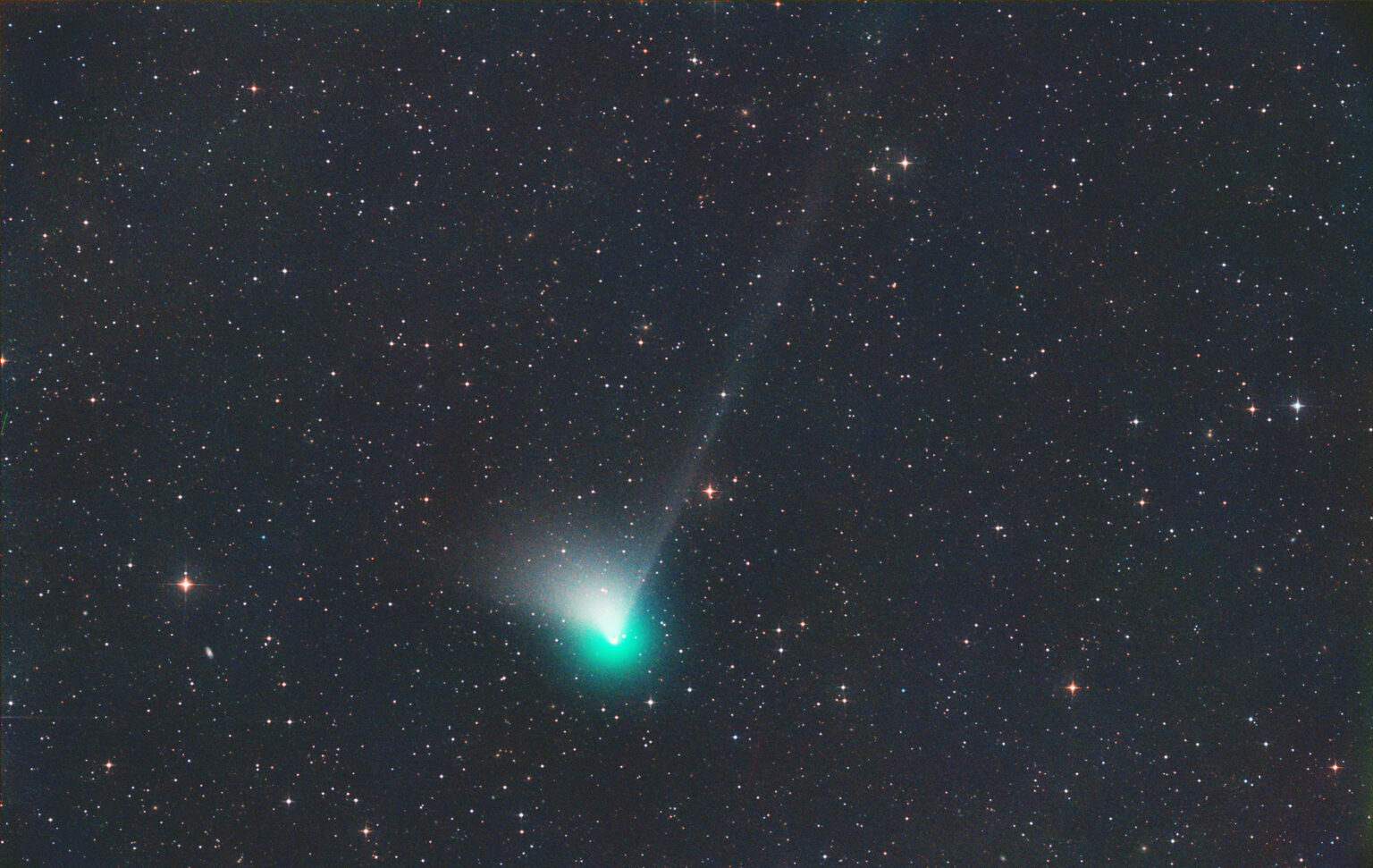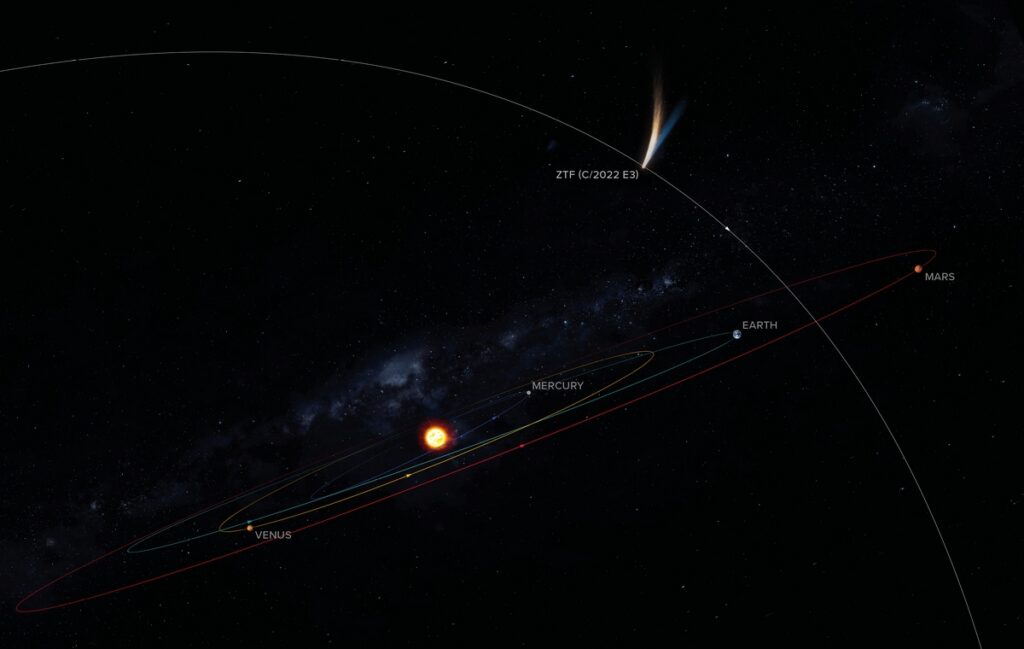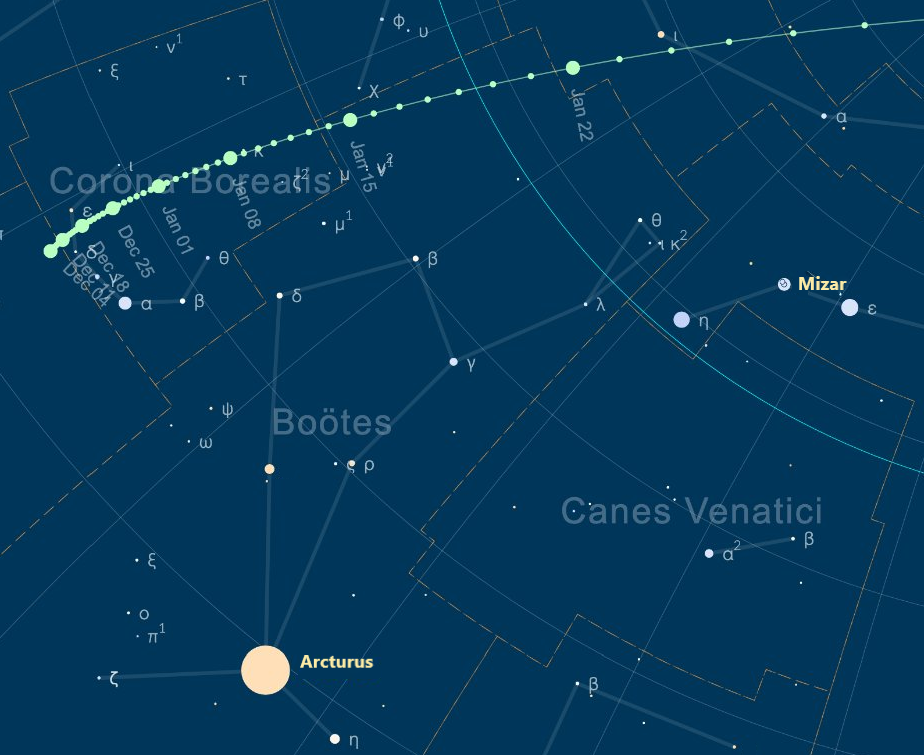Every year at the beginning of January, the Earth passes the perihelion — the closest point of its orbit to the Sun. It is almost impossible for an ordinary person to notice this event, and we most often learn about it from the calculations of astronomers. This is not surprising: the Earth’s orbit is close enough to the circular one to make the conditions at perihelion and aphelion very different. The situation with comets is completely different.
The eccentricities of the orbits of “tailed stars”, with a few exceptions, exceed 0.5, and most often are close to one. Because of this, they spend the vast majority of their time away from the Sun, in the depths of cold space. As they approach the sun, cometary nuclei begin to heat up and active processes responsible for the activity and, as a result, the appearance of comets unfold in them. And these processes depend very much on how many times a particular object has already managed to visit the “warm” central regions of the Solar System.

Short-period comets that have passed perihelion more than twice usually “stabilize” and do not present astronomers with big surprises. Their brilliance changes quite predictably when approaching the Sun, often inversely proportional to the fourth power of the heliocentric distance. With each return, the nuclei of such comets are “depleted”, losing volatile matter, so their absolute brilliance (enumerated by the distance from the Earth and the Sun in one astronomical unit) gradually decreases. There are few exceptions here, and almost all of them are unstable nuclei prone to decay, which is accompanied by unexpected emissions of gas and dust, and consequently flares of brilliance. However, such “unpredictable” comets quickly disintegrate completely and cease to exist. If their orbits passed close to the Earth, meteor showers might remain “in memory” of them.
The opposite of them are the nuclei that first left the distant Oort comet cloud and fly up to our luminary. They have a “full supply” of volatile matter and an almost “untouched” surface, almost not covered with dust. It is clear that their brilliance will grow faster near the Sun, so they most often become noticeable decorations of the night sky. This was, for example, the famous comet C/2020 F3 (NEOWISE). And it was after perihelion that it began to dramatically increase brightness, attracting the attention of astronomy enthusiasts and the general public. But quite large objects that can become bright and “unfold” a long tail do not fly up to our luminary very often.

Comet C/2022 E3 (ZTF) is an intermediate case. According to calculations, about 50 thousand years ago it was already approaching the Sun, having suffered the effects of its radiation and intense solar wind (streams of charged particles emitted by the luminary). So, certain changes could have already occurred on its surface, but, most likely, they did not move “in depth”. This model is confirmed by the light curve of this celestial body: from the moment of discovery until the beginning of April last year, it showed very rapid growth, which later slowed down greatly. And at the moment the brightness of C/2022 E3 (ZTF), depending on the heliocentric distance, varies approximately according to the same law as that of short-period comets. In this model, the absolute magnitude of the cometary nucleus is 7ᵐ, which corresponds to an average size of slightly less than 2 km. In the already mentioned comet NEOWISE, this parameter was almost three times greater.

The perihelion of comet ZTF will take place on January 12 at 9 p.m. GMT+2. At this moment, it will approach the Sun by 1,112 AU (166.5 million km) — this is 16.8 million km more than the average radius of the earth’s orbit. Such a distance can be conditionally considered safe: the intensity of solar radiation in this area of space is not so high as to cause some violent processes in the cometary nucleus. But this possibility cannot be completely excluded. Therefore, observations of the “tailed star” are of particular value now, especially since small telescopes and even binoculars will be enough for this in the near future. The influence of gravity of large planets has changed its trajectory in such a way that it has turned from a very elongated ellipse into an open hyperbola, so that after the current passage through the central regions of the Solar System, comet ZTF will leave it forever. However, astronomers of the Northern Hemisphere will have time until the beginning of April to “say goodbye” to it.
Follow us on Twitter to get the most interesting space news in time
https://twitter.com/ust_magazine

